UD's response to the coronavirus
Over roast duck and handmade dumplings, seven American students joined seven Chinese students in a celebration held in Dayton for the Chinese New Year. It was a joyous event filled with laughter as students served themselves from shared platters. The Americans told stories of the study abroad course 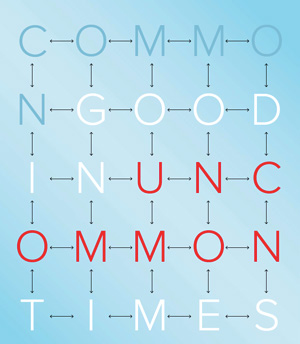 from which they had just returned, a two-week immersion in December and January to learn about business, culture and history in China.
from which they had just returned, a two-week immersion in December and January to learn about business, culture and history in China.
“I believe going to China is the best way for our students to learn more about a different culture, a language and the Chinese people,” said Xiaoli Li, associate professor of English who hosted the meal and led the course in professional and technical writing in China.
Their trip began before a new pneumonia-like disease was first reported in Wuhan, China, and finished just as the U.S. Centers for Disease Control and Prevention was issuing its most mild travel precaution for Hubei Province. The students were never near the hotspot and were back in their UD classrooms well before the emerging virus would reach Ohio. It would be two months before the World Health Organization would declare a pandemic.
Those seven students would be the last to complete a study abroad for the foreseeable future the way things used to be — where hugs solidify international friendships and hands-on learning means being in the middle of the action.
Primary is the health and safety of the campus community.
As the virus quickly spread worldwide, it became apparent that the way things were — from study abroad to classroom lectures to Reunion Weekend — would be changed by physical distancing and state-mandated stay-at-home orders. The University’s response took on a strategic focus. President Eric F. Spina laid out the guiding principles, primary being the health and safety of the campus community, followed closely by the sustainability of the University of Dayton and its educational mission.
“This is our test to make certain that the decisions we make prioritize the long-term future of this place, the future of this grand Marianist experiment here in southwest Ohio, something that’s really worth giving our all for,” Spina said.
Safeguarding the campus community through the spring would require a coordinated effort by all areas of the University, in conjunction with local and state public health officials. And it will take even more work to ensure the campus community can come together in the fall. Each person’s commitment to the common good will create a new iteration of the community spirit for which UD is so well known, one where individuals protect the community by taking responsibility to protect themselves.
International hits home
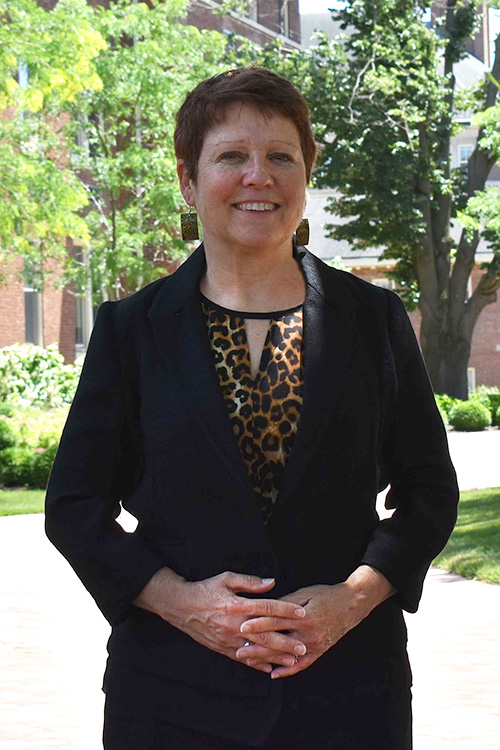
Dr. Mary Pelszynski Buchwalder ’82 was one of the first on campus to read the CDC advisories about this new virus. A veteran of student health since 1991, the medical director of UD’s health center said she scours medical updates for information about safety measures for campus. She immediately thought of UD’s international students, who were just returning for spring term, as well as domestic students who travel during winter break, and directed her staff to ask patients with respiratory symptoms about their recent travels.
It wouldn’t be the first time she’d made plans for an emerging health threat. Buchwalder has been part of a team responding to existing and potential communicable diseases, from SARS to mumps to chickenpox. While contact tracing is a new phrase in everyday conversation, Buchwalder has been following the dots for years.
“People think we just take care of colds,” Buchwalder said of the campus health center, “but if you pick a part of the body, we have dealt with it — the common things but also unusual things. In medicine, we say if you hear hoof beats, it’s probably a horse, but sometimes it’s a zebra. And so we keep a little zebra file because we see interesting zebras, too.”
While COVID-19 is not a rare zebra, it is requiring the same keen attention by Buchwalder and her staff as information evolves regarding protective measures and available treatments.
Amy Anderson ’09 was also taking notice of the unfolding response in China. As UD’s associate provost for global and intercultural affairs, she’s long been a champion for creating opportunities for students to study abroad and for international students to join campus, two ways the University fulfills its goal of educating culturally competent citizens of the world.
Her first worry was for UD’s Chinese students who went home for break. Were they well? Were their families OK?
And then she thought of the students studying abroad.
Members of UD’s international response team met three times over five days in mid-January. Each day — and sometimes each hour — brought new understanding to how the virus was moving around the world.
One of the team’s first decisions was about China, where several faculty-led courses, internships and experiential learning opportunities were planned for summer 2020. To help protect participants, they moved the courses from China to South Korea — and then South Korea reported its first cases of COVID-19. By the beginning of March, all programming initially scheduled for China was canceled.
Meanwhile, five UD students were making their way to South Korea for the start of a spring semester abroad. On Feb. 25, based on CDC guidance, the University communicated with students that they hoped the semester could continue. On Feb. 27, they told everyone to return home immediately. The pandemic’s impact on the rest of the world was becoming clear.
That same day, the University required 13 students studying in Italy to come home. France became a hotspot, and two weeks later UD recalled 86 more students throughout Europe. In mid-March, Anderson’s office required another 30 to come home from all over the world — Australia, Africa, Latin America, even Semester at Sea, where Flyers floated with their classmates aboard a boat in search of an open port. UD also encouraged 13 students at Chaminade University, a Marianist school in Honolulu, to come home.
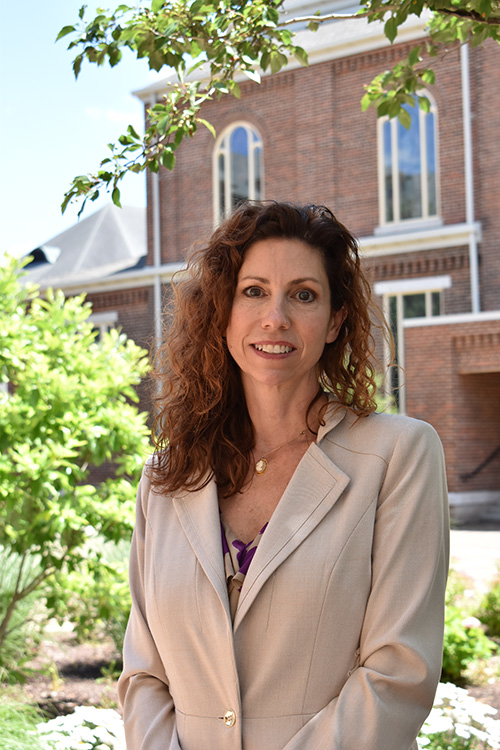
It was terrible, she said, to have to tell students that their lifelong dream of studying abroad was being cut short, especially when so many people at the time didn’t think the virus was a big deal. There was sadness and frustration. But quick action meant UD’s students were safe.
“We were able to get our students home when a lot of other schools weren’t,” Anderson said.
Back on Jan. 28, the crisis took on an entirely different tone. Miami University, also situated in southwest Ohio, announced two students recently returned from China with respiratory symptoms were in isolation awaiting test results.
“It went within three days from being concerned about our Chinese students and our domestic students in China to being concerned about this new virus locally,” said Robin Oldfield, assistant vice president of audit, risk and compliance and chief risk officer. “It really started to quickly evolve from there.”
Health and safety
On March 2, the Flyers volleyball team picked a perfect place to revel in their A-10 championship — bowling at Capri Lanes. UD’s president, as is his tradition, joined them in the evening celebration.
“I went to a place where I wore someone else’s shoes and put my fingers in multiple bowling balls that who-knows-who had their hands in previously,” said Spina. Just hours before, he had met in a conference room in St. Mary’s Hall to discuss the University’s response should a case of the novel coronavirus be found on campus. “I’d be lying to you if I thought during that 4:30 p.m. meeting that this was going to consume our lives and lead to the University sending students home for the rest of the semester,” he said.
The speed at which the virus and understanding of its impact spread can be summed up in two snapshots. The first is from Saturday, March 7, when students hoisted homemade signs and squeezed into the camera frame for a live airing of ESPN’s College GameDay. The second is Tuesday, March 10, when students received an email from UD saying spring break was starting early and everyone who could leave campus the next day must do so.
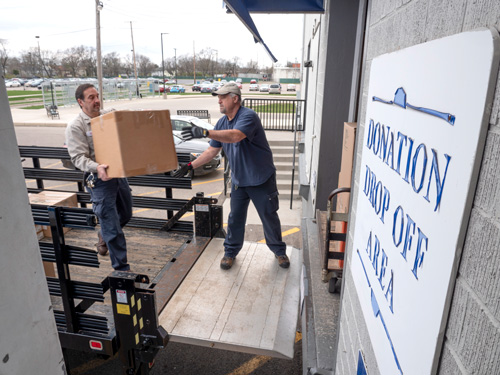
Since January, committees had been meeting and planning, preparing and speculating, each bit of new information digested and strategy reassessed. But before March 10, Oldfield said, “We were figuring out what is the most prudent thing to do. The decision was on us.”
March 10 was different. It began with morning texts among the three local college presidents: Spina, Sue Edwards of Wright State University and Steven Johnson of Sinclair College. Ohio Gov. Mike DeWine had asked to speak with higher education leaders that day, and rumors were that the news was not good.
“This is not about our institutions but our students.”
“The three of us pledged to one another that this is not about our institutions but our students — 30,000 altogether,” Spina said. “They’re integrated into every part of civic life in Dayton. What we do could matter.”
Along with DeWine on that 12:45 p.m. phone call were then-Ohio Department of Health Director Dr. Amy Acton and Ohio Department of Education Chancellor Randy Gardner.
Spina sat in his office with Molly Wilson, vice president of University marketing and communications, while other members of the executive task force listened from their offices.
The message was forceful and clear. Oldfield wrote down these phrases:
“We have to slow it down.”
“It’s up to you to determine how many people die.”
“Quick, strong action will save lives.”
“Quick, strong action will save lives.”
And Spina remembers DeWine sharing a powerful example of the health crisis currently consuming Europe:
“We’re now where Italy was 10 days ago. We can follow that path or disrupt it.”
When the call was over, Spina turned to Wilson, and they agreed: “We’ve got to act soon.”
At 2 p.m., a call with Montgomery County, Ohio, Health Commissioner Jeff Cooper confirmed the seriousness of the situation. At a 3 p.m. executive task force meeting in the first-floor conference room in St. Mary’s Hall, University leadership finalized plans they had already been discussing for a temporary cessation of in-person classes.
“Once Gov. DeWine and Dr. Acton spoke, it became very clear what decisions needed to be made,” Oldfield said. “As difficult as it was, there was much more clarity.”
Calling it a “crucial moment in time,” Spina emailed students that evening. He suspended in-person classes beginning 8 a.m. the next morning, effectively starting spring break three days early. Students were instructed to leave campus by 6 p.m. Wednesday, March 11, if possible, and to take what they’d need to continue their coursework online though at least April 6.
“We all understand how special this campus community is to our students and how difficult it will be for people to be away for an extended period,” Spina wrote. “Please do know that we will strive to limit the period of absence as best we can, but that the health and safety of each of you is our highest priority and will drive this decision.”
The next day, the World Health Organization declared a pandemic, and by March 20 the University would decide to finish the spring semester online. All campus events would be postponed, all summer classes switched to online, and most faculty and staff asked to work from home.
Looking back, Spina said, the three-week break from in-person classes seems exceptionally optimistic. But he knew that extending their absence from campus would also mean postponing commencement. As the father of a senior at Skidmore College who had just been told commencement there was canceled, he did not want to abandon hope. “These are my kids — our 11,000 students,” he said.
The video he sent to students that extended online learning exposed his grief and shared suffering. It was the right message for the time, and it was well-received.
“This was something that we all were experiencing together.”
“The feedback that I got from 50, 60, 80 students and parents whom I had never met, their recognition that the University saw them and saw the loss they were experiencing, was a moment that really speaks to this notion of community, of a shared humanity,” Spina said. “People saw this was something that we all were experiencing together.”
Working together
Throughout the spring semester, there were no confirmed COVID-19 cases on campus among Flyer students nor the faculty and staff.
The community that is UD’s hallmark worked together to promote safety for everyone. The ultimate irony is that they came together to keep the community safe by initially keeping them physically apart, scattering them to home offices, bedrooms and porches across the country.
As students — and then staff and faculty — headed home, colleagues worked together to solve problems they previously had never anticipated:
• UD Information Technologies coordinated with every department and office to outfit and support faculty and staff with hardware and software to work from home, while the Learning Teaching Center provided pedological support for moving classes online.
• Dining services worked with the Center for International Programs to provide food for more than 400 international students who could not return to their home countries; most continue to be served today.
• University marketing and communications collaborated with the registrar’s office and deans to create virtual degree conferral ceremonies for more than 2,000 graduating students.
• Colleagues throughout campus volunteered to work five-hour shifts, even on weekends, to help students and their families with a staggered move-out of University housing throughout May and June.
Bill Fischer, who has served as vice president for student development for 11 years, said the level of cooperation he’s recently witnessed rivals the exceptional collaboration for which UD is known.
“We rely on each other for support, guidance, expertise and experience,” he said. “We are all working for the same thing — the safety and well-being of our students and University.”
Regional partners also play a role. The University set up a mobile testing center for Premier Health in the parking lot of UD Arena, with the UD health center providing staffing support. Local physicians and health professionals are among those on the University of Dayton COVID-19 Medical Advisory Panel, helping guide UD’s plans to bring students back to campus in the fall, monitor the impact of COVID-19 on campus and inform future medical decisions.
Campus had also prepared in other ways. While no one had foreseen a pandemic of the novel coronavirus, the University previously created plans for how to respond to other emerging health threats, including SARS. Spina had experience in planning for Ebola as provost at Syracuse University, which had students studying in Africa during a disease outbreak there. And UD last winter had sent participants, including Buchwalder, to a regional tabletop exercise for emergency response — for a pandemic flu.
“The really excellent thing about the regional exercise is that you meet people in person who you are going to depend on,” Buchwalder said.
When you’re in a crisis, you appreciate the practice such simulations offer, Oldfield said. You also discover how different a pandemic is from a tornado or flood. For natural disasters, the response window is short and the recovery long.
“Since Jan. 24, we’ve been in response mode,” Oldfield said of this crisis, which every day offers new data to consider. “We have yet to hit recovery. The future is still unknown.”
Toward fall
Among all the unknowns about the novel coronavirus is one decided fact: The University is working toward welcoming students back in the fall.
Paul Benson, provost and executive vice president of academic affairs, described the challenges of educating students on a close-knit residential campus.
“Flexibility and adaptability will be essential to everything we do in the fall,” he said.
“Flexibility and adaptability will be essential to everything we do in the fall.”
Among the ideas being explored are:
• a phased move-in over two weeks in August.
• testing, monitoring and containing of cases, including setting aside housing for students who are at high risk or need to isolate or quarantine.
• creative scheduling and flexible course delivery, including completing the semester online after students return home at Thanksgiving.
• wearing face coverings and implementing physical distancing.
Welcoming students back will also require everyone in the campus community to make a mutual commitment for each other’s health and safety.
“Students will not only be taking care of themselves, they will be taking care of each other,” Fischer said.
All classes are being planned for flexibility to accommodate students who may need to self-isolate during the semester or to allow for seamless transition should the public health condition change. Some classes will be totally online. This could be because the class size is too large to provide space for physical distancing or the faculty member is unable to return to campus for health reasons. These online classes can also accommodate students who can’t come to campus for health reasons or due to travel restrictions.
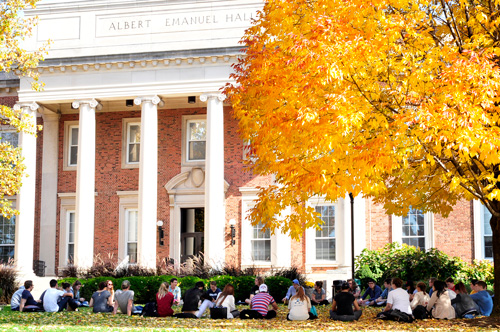
UD’s doctor of physical therapy program offers a model of how clinically based courses and programs that require hands-on learning could be designed. A summer pilot brought doctoral students back to campus for two weeks of training required for their high-touch profession. The pilot followed CDC guidelines and was approved by public health officials.
International programs are also again being planned, with a virtual twist. Anderson said this summer her team welcomed a new multinational cohort of students enrolled in English studies via videoconferencing. While decisions on fall study abroad will be made later this summer, she expects domestic intercultural immersions to expand once travel restrictions are lifted.
It is taking a village to provide the tools, infrastructure and safety protocols to allow in-person classes in the fall. Nearly 100 members from a cross-section of campus have come together to draft the plans. Four primary working groups are developing recommendations for critical areas of University operations including academics, housing and student life, preventive measures, and infrastructure and operations. Seven specialized groups are focusing on implementing plans and campus operations in the context of the pandemic; other special groups are added as needs are refined. Many more departments and offices are deciding procedures for their work when staff and faculty return to campus in August.
“The principle of subsidiarity is important,” Spina told a virtual meeting of directors during the spring, referring to the principle of Catholic Social Teaching that empowers those closest to the decision to act. “A lot of decisions will be made locally.”
It will be impossible to eliminate all risk, Spina said, but a focus on health and safety will help the community we love to come together come fall.
“We understand very well that the magic of a UD education is in community,” Spina said. “We’re working toward welcoming students back because we understand the great value — for all of us and for the city of Dayton — there is in being together on campus, working together.”
Read more in the series "Common Good in Uncommon Times":
'The financial impact is profound'
LEAD, SERVE
Follow the links to learn more about how members of the Flyer community have chosen to help their communities and our world during the pandemic.
UD’s motto “For God and Country” inspired Fred McBagonluri ’05, president of Academic City University in Ghana, to use local parts and local ingenuity to build ventilators.
Assistant professor Julie Walsh-Messinger has contributed to a massive crowdsourced survey of COVID-19 patients that looks at loss of smell and taste.
Fred Tenover ’76 was part of a team that in 28 days created a test for the novel coronavirus that provides doctors results in 45 minutes.
Protecting health care workers
UD Research Institute and its in-house manufacturing partner FastLane are creating personal protective equipment with area businesses.
When the nation needed a solution to the PPE shortage, Flyer innovators at Battelle built and delivered decontamination units.
Software developed by Barath Narayanan ’13 of UDRI uses artificial intelligence to diagnose COVID-19 in seconds in scans of the lungs.
Three Flyers created a video featuring mousetraps and ping pong balls on how social distancing stems the spread of the novel coronavirus.